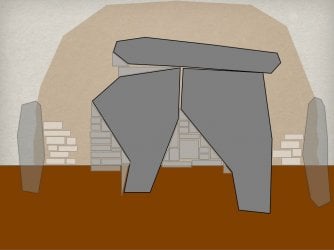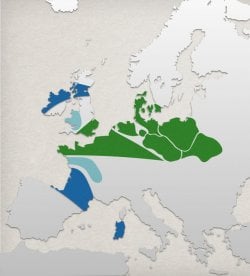Widdekind
Member
- Mar 26, 2012
- 813
- 35
- 16
- Thread starter
- #21
i did not know, that the bewildering panoply of many megalithic monument types, all actually form a single family of essentially similar monuments... but all in various states of dilapidation. The big burial barrows were high hills of soil, sand, and sometimes stones... heaped over pre-emplaced chambers, composed of sizey stone slabs (for the four walls) and level-lying capstones (for the roof). Those chambers were sort-of sizey stone sarcophagi, cobbled together, from several slabs.
So, if you now imagine subjecting the burial mound structure, to many millennia, of wind & weather, erosions would first disperse the soil & sand heaped high in a hill, so exposing / revealing the interior stone structure... which would then look like a free-standing so-called "Dolmen"...
then, when the Dolmen collapses, you have a jumble of big boulders...
in such a way, most of the megalithic monuments can be likened to a couple of kinds of "Ford model-T-series cars"... albeit at different stages of assembly/dis-assembly, along the production line
So, if you now imagine subjecting the burial mound structure, to many millennia, of wind & weather, erosions would first disperse the soil & sand heaped high in a hill, so exposing / revealing the interior stone structure... which would then look like a free-standing so-called "Dolmen"...
then, when the Dolmen collapses, you have a jumble of big boulders...
in such a way, most of the megalithic monuments can be likened to a couple of kinds of "Ford model-T-series cars"... albeit at different stages of assembly/dis-assembly, along the production line


